What distinguishes good advertising from bad advertising is not the quality of photos, design, or copy alone. All of these elements are supposed to enhance the core message and the concept behind your ad. However, the primary goal of advertising is to connect with your audience.
The best way to achieve it?
Use one of the common advertising appeals. Give people what they long for, make them smile, laugh, or cry.
Get chatbots to easily collect leads from your advertising campaigns
Every consumer and every brand is different but, ultimately, business owners want to increase their sales and popularity while consumers want to satisfy their needs. Understanding these needs – the ways to fulfill them and appeal to them – is essential.
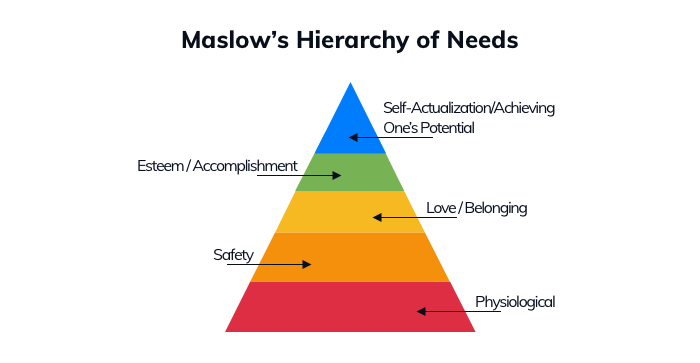
To create effective and appealing email and text blast marketing campaigns you should familiarize yourself with the examples below, as well as Maslow’s hierarchy of needs.
Tip: If you want to increase the reach of your email advertising you can try out these 7 techniques to generate leads online in 2020.
What Are Advertising Appeals?
Advertising appeals are different techniques and strategies that are used to attract customers. Usually, advertising appeals provide evidence or provoke an emotional response that helps to convince the target audience to buy a certain product or service. Marketing experts group them into different categories but the most common appeals are emotions, logic, and popularity.
If you want to understand your customers even more, you can also read: A Quick Guide to Consumer Psychology and Customer Behavior
Types of Advertising Appeals That Can Be Used in Emails
Some of the most common strategies used in advertising appeal to basic human needs. An ad may titillate your taste buds by showing you a delicious slice of pizza or it can try to resonate with your personal beliefs and values.
- Appeal to emotion
- Personal appeal
- Social appeal
- Appeal to popularity
- Appeal to authority
- Appeal to logic
- Appeal to humor
- Appeal to fear
- Sex appeal
The spectrum is very wide, so it’s best to go through different types of advertising appeals one by one. They make very interesting case studies. Each case is illustrated with an email example.
Appeal to Emotion
Although people like to perceive themselves as rational beings, their reality is mainly shaped by social interactions, emotions, customs, and culture.

We want to satisfy our personal needs and achieve our personal goals but, at the same time, we must also take care of various roles imposed on us by society. The general trend is that people want to constantly improve the quality of their life and prevent bad things from happening. All of these desires and fears can be used in your advertising materials and communication strategy. Appeal to emotion to win your customers over and persuade them to buy.
Emotional advertising takes into consideration emotions linked to personal and social needs. Reaching consumers by appealing to their emotions is one of the most effective and persuasive advertising techniques. Some of the common ad themes appeal to feelings and values such as love, happiness, family, friendship, need for fame, respect, and recognition.
If you are interesting in marketing automation tools that appeal to emotions, you can try using chatbots. They can be used to engage customers with human-like, personal approach. You can get 20+ free chatbot templates with your free Tidio account.
Personal Appeal
By addressing the most private psychological needs we can make a powerful connection with our customers. Personal appeals frequently used in advertising include feelings and emotions such as love, friendship, happiness, or security.
This sphere is, by definition, intimate so it’s important to be careful – you can either strike a chord or a false note. Let’s take a look at an email ad by Casper.

Company: Casper
Type of advertising appeal: Appeal to emotion – love and belonging
Pros: Uses a slice-of-life situation that is easy to relate to and it appeals to couples
Cons: May not be very appealing to the ones who are not in a relationship
A picture of a couple spooning in bed is nothing out of the ordinary. Quite the opposite – the situation is very relatable and instantly brings to mind a sense of comfort, security, and emotional attachment. This mattress email ad is appealing because it depicts an intimate situation without being blunt.
Here is another example of personal appeal based on emotions and strongly resonating with the private sphere. The email example below advertises a new model of a Google Pixel smartphone.
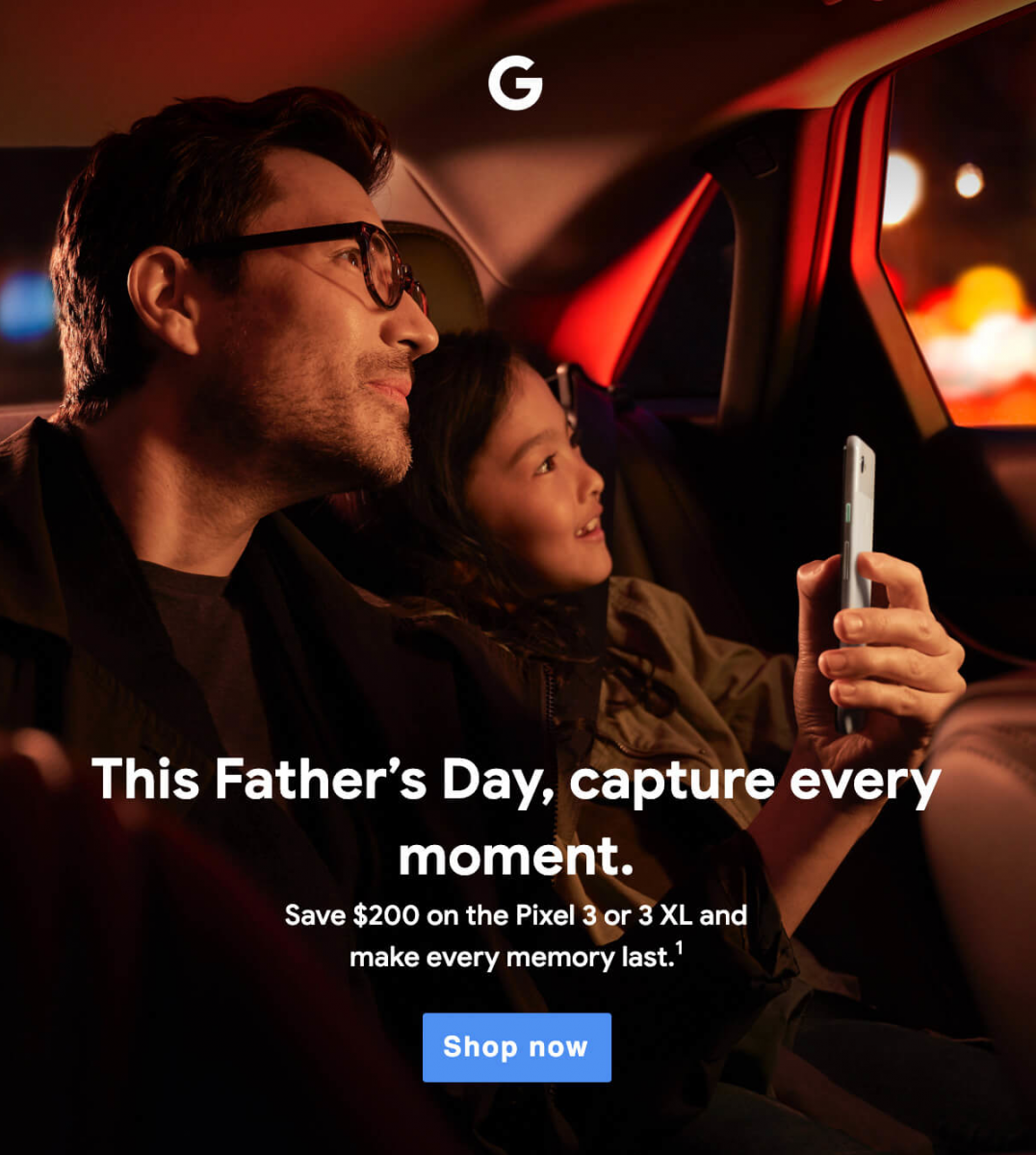
Company: Google
Type of advertising appeal: Appeal to emotion – family and parenting
Pros: Very relatable to fathers and parents in general
Cons: May not be appealing to people without kids or people from broken (or abusive) homes
This Pixel smartphone ad also shows a situation which is appealing because of the emotional connection. In this case, it’s the love between the father and the child. Family is one of the most common themes present in the world of advertising. It is immediately associated with strong emotional bonds, happiness, responsibility, traditional values, and safety.
Middle-class families are great as marketing target groups because they statistically consume more than those who choose alternative lifestyles or remain single. Depicting families in advertising materials is also easier since they are a relatively uniform group with many shared experiences.
Using family-themed iconography in your ads can instantly connect you with your customers – in point of fact, it is a blend between personal appeal and social appeal. Families are both basic building blocks of society and groups of people bonded by emotional relationships and mutual responsibilities. They are the largest consumer group that can be addressed with a single image or situation such as a family dinner, picnic, or a bike ride.
If you want to personalize your marketing in real-time, try mixing the conversational approach and new technologies. One of the most effective marketing techniques right now is chatbot marketing.
Social Appeal
Social needs are linked with our public image and the ways we interact with others. While personal appeal tries to address individual and intimate needs, social appeal focuses on somebody’s position within particular social groups and society as a whole. Social appeals used in advertising connect with customers by using motives such as status, fame, recognition, or respect.
f you want to get closer to your customers or audience, try using live chat software on your website. It’s one of the easiest and fastest way to understand who your clients are and what are their needs. Try a free tool like Tidio (it gives you unlimited messages and a powerful visitor tracking panel).
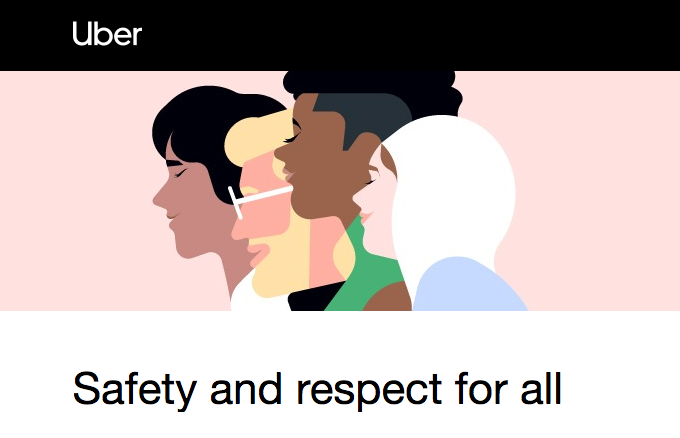
Company: Uber
Type of advertising appeal: Social appeal – respect and diversity
Pros: Appeals to people who believe in inclusiveness and sympathize with minorities
Cons: It won’t appeal to people who are not open towards different cultures, nationalities, and races
This email ad by Uber advocates values embraced by modern society. At the same time, it appeals to members of different minority groups and addresses their need for recognition and safety.
As opposed to previous examples, it does not put emphasis on personal relationships between individuals but interactions and attitudes that happen in a particular social context.
Here is a different email ad example that uses social appeal:
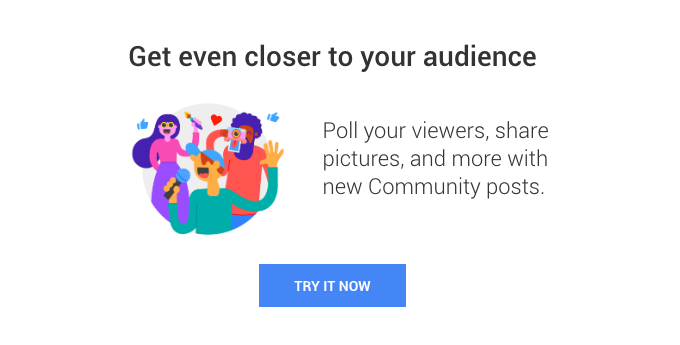
Company: YouTube
Type of advertising appeal: Social appeal – community, fame, and recognition
Pros: Appeals to people who want to belong
Cons: It won’t appeal to people who are not sociable and are afraid of sharing
The email sent by YouTube depicts a group of creative people. It targets artists, signers, photographers, and all other YouTubers who share their works online through their YouTube channel. This ad will appeal to people who – at least partially – build their identity around their social roles as artists and performers.
The previous social appeal example was concerned with ethnic identity and security. Here we can observe an approach which grabs the attention of the email recipients by acknowledging their creative efforts and by providing means to satisfy their need of connecting with their audience.
Appeal to Popularity
The easiest way to convince somebody to buy a product or service is to prove that everyone else has done it already. Once something becomes a widely recognized phenomenon or a trend, it becomes obvious that it has to have some merits – otherwise it wouldn’t be so popular. Right?
This is sometimes referred to as the bandwagon effect. The more popular something becomes, the more people buy into it and, consequently, it becomes even more popular. This can become an important asset and a key point of your marketing strategy.
For instance, Tidio’s WordPress chat plugin is one of the most popular WP live chat tools available. It has more than 60,000+ active WordPress installations and 200,000+ installations on websites that are not powered by WordPress. This is a kind of social proof based on popularity that can be used as a marketing appeal.
Let’s take a look at some next email ad examples.
Here is a thank you email by Unsplash – a stock photography website.

Company: Unsplash
Type of advertising appeal: Appeal to popularity – the number of contributions
Pros: The recipients can feel that they are part of a community and that the website is becoming more and more popular
Cons: It won’t appeal to people who sneer at herd mentality and who believe that your newly discovered favorite band was far better three albums ago when nobody heard of them
Not only does this email appeal to customers’ need for recognition but also it reassures them that they’ve made the right choice. The popularity of this website serves as a testimony to its high quality and ability to create a “passionate and creative” user base.
This type of social proof backed by numbers can be an ace up your company’s sleeve in your next email campaign. The bandwagon appeal is just like the snowball effect – it starts slowly but later on it accelerates and grows in significance. An average consumer believes that products that are popular among other consumers are bound to be good.
When it comes to popularity, you can either use the collective endorsement of your customers or get a celebrity. The end result is very similar. Things become acknowledged and noticed when they are backed up by a famous person or thousands of not-so-famous persons.

Company: Masterclass
Type of advertising appeal: Appeal to popularity – the endorsement of a celebrity
Pros: The celebrity is involved in the most natural way possible (as a tutor) and his role is not superficial
Cons: It won’t appeal to people who haven’t heard of Daniel Negreanu
It is a fragment of the Masterclass email campaign that encourages customers to take part in the Masterclass poker course. This email ad appeals to the popularity of Daniel Negreanu, a professional poker player. Instead of listing, for instance, the numbers of people who’ve already decided to enroll, we get a piece of information about the successes of the poker champion.
Appeal to Authority
Appealing to authority is very different from getting a celebrity endorsement. Sometimes these types of advertising appeals overlap, but in some fields, experts and top professionals are not easily recognizable. The value of their expertise, however, is appreciated.
Here is an email advertisement example from the Plum Guide – a London based vacation rental company.
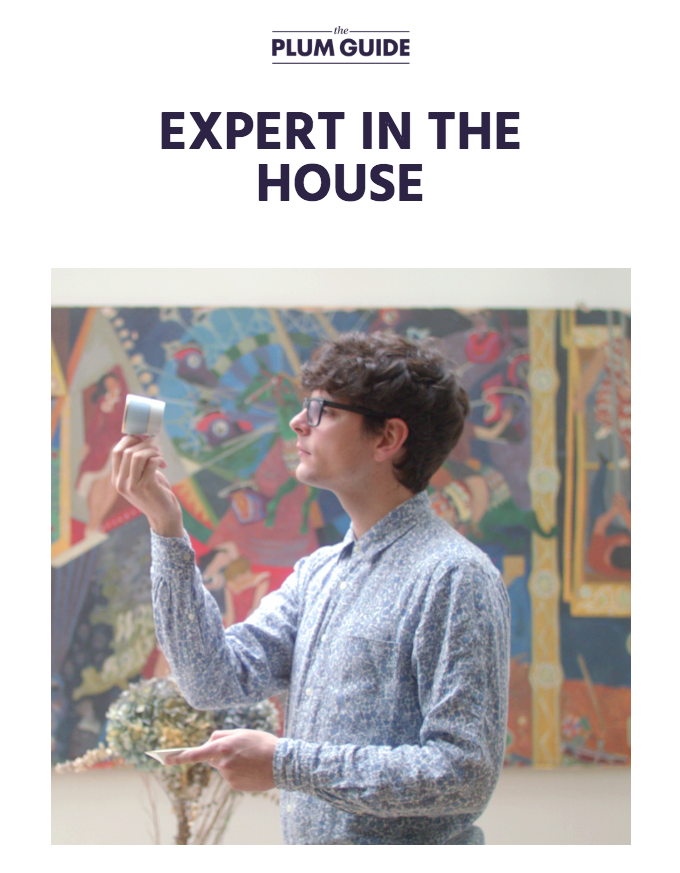
Company: The Plum Guide
Type of advertising appeal: Appeal to authority – Plum’s home critics
Pros: It appeals to those who value good taste
Cons: The aura of exclusiveness and high standards signal that the apartments may be costly, which could deter some customers
The Plum Guide has its own team of architects, interior designers, and other professionals who give their “stamp of approval” to every apartment you can book on their website. This advertisement reveals what happens behind the scenes to reassure their customers that what they get was meticulously tested and reviewed by a “razor-sharp eye”.
The picture strengthens the message of the ad. Every element of Plum’s apartments gets under the careful examination. They are not just ordinary interior designers, but “home critics” who approach the apartments like they were works of art.
Appeal to Logic
If you don’t know how to reach your customers’ hearts and emotions, you can still try to convince their brains. Appeal to facts, calculable benefits, and statistics to encourage the recipients of your email ads.
Here is a fragment of an advertising email by Lyft which appeals to logic (and math skills).
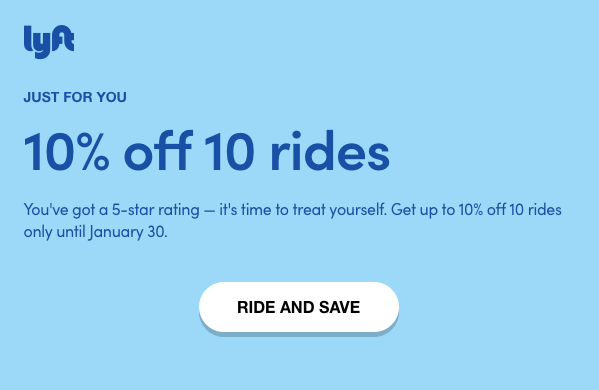
Company: Lyft
Type of advertising appeal: Appeal to logic – a rational appeal with measurable benefits
Pros: The recipients get a unique reward based on their rating and can save money
Cons: There are too many numbers (10%, 10, 5, 10%, 10, 30) and the message is confusing – is it “10%” or “up to 10%”?
Logical fallacies are very popular in advertising. However, being honest and bringing hard logic to the equation of your marketing formula can do wonders for your sales. Modern buyers try to make rational decisions so it is good to talk the language of tangible benefits.
Appeal to Humor
The more engaged your customers get, the easier it is to convince them to buy. If you can make them smile, you are in a great position to sell. The bad news is that jokes tend to be funny only once. The good news is that when it comes to your email marketing campaigns once is enough!
Here is an example from J.Crew Factory.
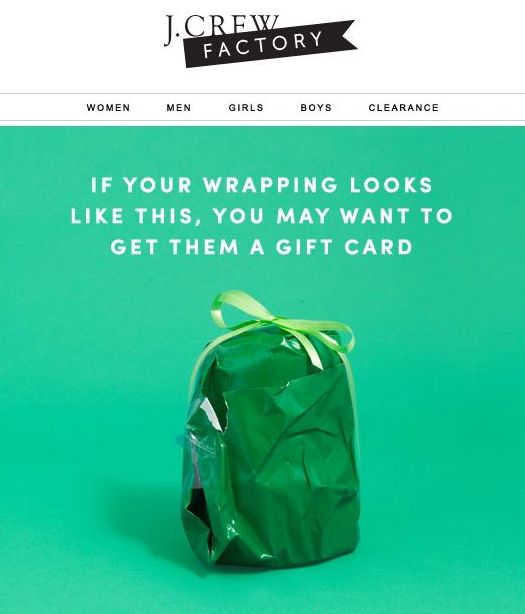
Company: J.Crew Factory
Type of advertising appeal: Appeal to humor – self-irony
Pros: The email ad is funny, relatable, and offers a quick and easy solution to a problem
Cons: It won’t appeal to people who take things too seriously and to the masters of gift wrapping who take pride in their art
This J.Crew Factory email is awesome on many levels. It brings everybody back to an experience that they went through at least once in their lifetime. Wrapping some presents is next to impossible and it is usually being done at the very last minute.
In retrospect, this is a kind of memory that is at the same time funny, nostalgic, and a little bit humiliating. J.Crew Factory email taps into that feeling and makes it even more reason to buy a gift card instead of a regular gift.
It is easy to engage customers with funny messages. For example, messaging platforms and chatbots give many opportunities to use humor. Check out the best funny chatbot messages. Nowadays, everybody can build a chatbot and add it to their website.
Appeal to Fear
Scaring your customers into buying things is not a good advertising strategy (unless it is Halloween and you want to use some relevant imagery). Fear is usually used only combined with one of the other advertising appeals. An introduction may be scary, but something funny and calming is used as the punchline of an ad.
The most common fears involve some kind of loss – of health, wealth, safety, beauty, or opportunity. However, the ads that approach these issues tend to briefly introduce the problem and focus on the solution and positive aspects.
Here is a good example of an email ad that uses fear as its advertising appeal.

Company: Oregon College Savings Plan
Type of advertising appeal: Appeal to fear – getting in debt
Pros: The email draws attention to the problem of financing one’s education (that needs to be dealt with eventually)
Cons: The imagery is probably a little bit too dark and creepy
This email example uses very interesting images and creates the atmosphere of being lost in a dark fairy tale forest. It appeals to fear through imagination and draws up some worrying scenarios. There is, however, a guiding light that is revealed at the very end of this email.
The motive of lost opportunity is very frequent in advertising. One of the most common fears of the 21st century is the fear of missing out (FOMO). FOMO is the anxiety linked with the feeling that the lives of others are full of joy and great opportunities that we are left out of. Here is an example of FOMO in action:
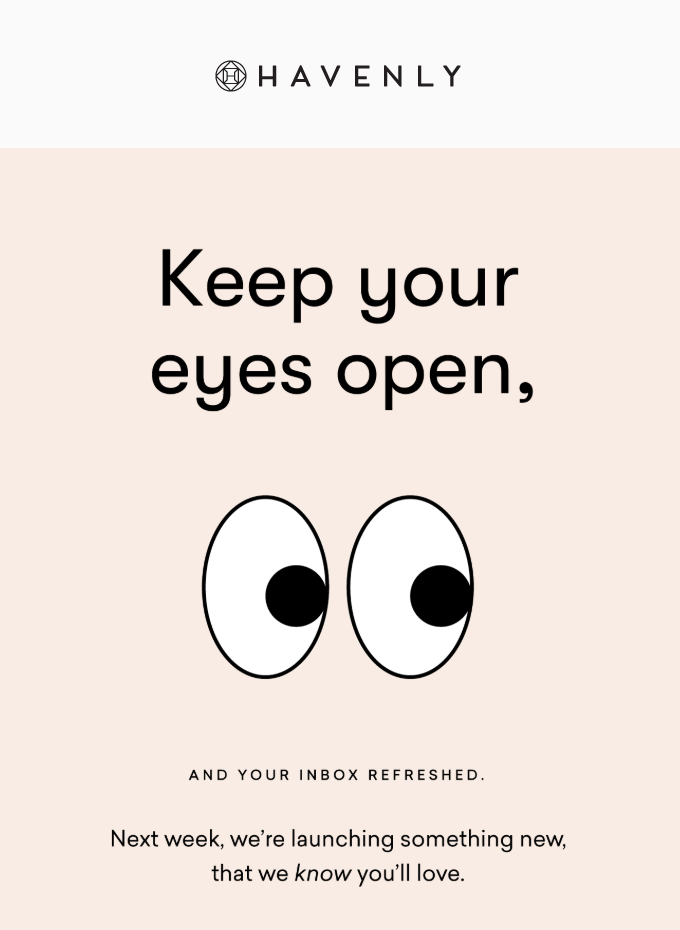
Company: Havenly
Type of advertising appeal: Appeal to fear – fear of missing out (FOMO)
Pros: It has a clear Call To Action message
Cons: We don’t know for what exactly we have to wait
This ad is very simple and intriguing. The big eyes seem very attentive and make the design memorable. Customers don’t know what to expect but they are assured that it is going to be something they’ll love. It would be a shame to miss it, wouldn’t it? While the ads announce something new and exciting, the main advertising appeal it uses is actually the fear of missing out.
Scarcity appeal is another example of appeals that are based on consumer’s fears. Campaigns that introduce product availability counters are supposed to instill the fear of not being able to make use of a limited offer. Appeal to scarcity is employed to encourage consumers to buy a product or service right away.
Sex Appeal
The relationship between sex and advertising is a long and complicated one. The attitude towards using sex appeal in marketing has been changing throughout the decades but it remains a very controversial subject. On the one hand, it objectifies women and men, on the other, sexual imagery can be very effective and it can be, paradoxically, used to draw attention to serious social problems.
One of the famous Diesel campaigns used a slogan: “Sex Sells *Unfortunately We Sell Jeans”. Unfortunately, sex still sells jeans like crazy, yet escessive use of sex appeal in ads is frowned upon.
Here is an example of sex appeal used in advertising:
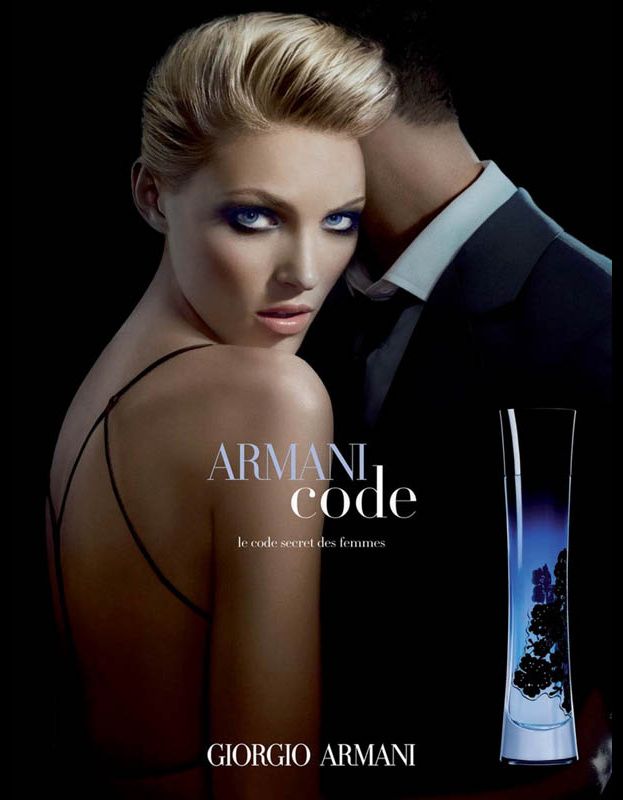
Company: Giorgio Armani
Type of advertising appeal: Sex appeal – become a sexually attractive woman
Pros: The ad is sensual and it draws the attention of both men and women
Cons: It perpetuates gender stereotypes and shows empowerment only through physical attractiveness
Some industries, especially the ones connected with fashion and cosmetics can get away with showing sexually titillating images. Idealised bodies and sensual poses and sexual gestures are part of their traditional advertising strategies and they appeal to their consumer base.
There’s a fine line between what’s considered classy and vulgar. Therefore, using sex appeal in your email ads may not be the best solution unless your products or services are relevant – a new line of perfume or clothes may use this type of advertising appeal and increase your sales, but the racier it gets, the more criticism it will attract.
Here is another example of sex appeal from Coca-Cola:
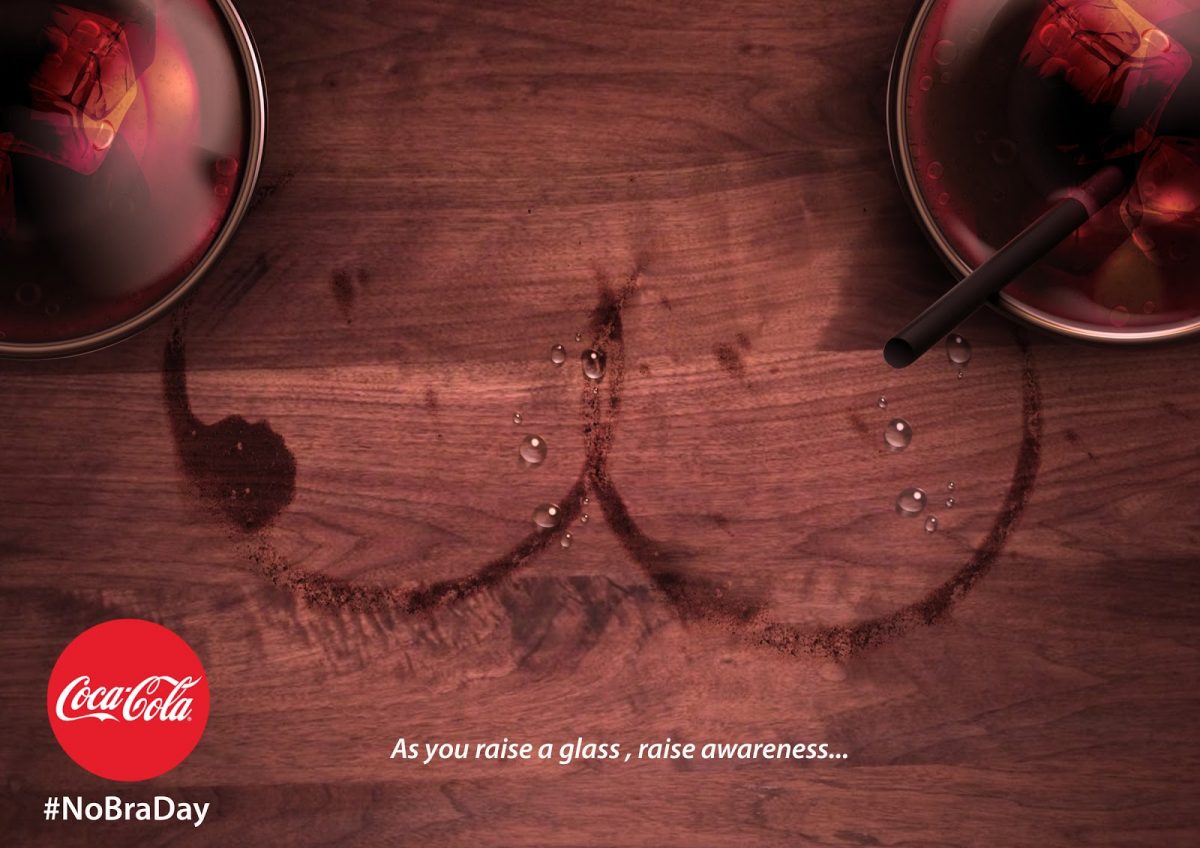
Company: Coca-Cola
Type of advertising appeal: Sex appeal with a twist
Pros: The ad is clever and it shows Coca-Cola’s interest in encouraging breast cancer awareness
Cons: On the very first glance it could appear like an immature joke
Because sex appeal can instantly grab attention, sexual imagery is often used to raise awareness about important social issues, health risks, or environmental problems. It is easier to persuade audiences to take action or think about an issue when a message is conveyed through visuals and words that are shocking, engaging, or provocative.
Find the Right Advertising Appeals for Your Emails
Your customers may seek happiness, peer recognition, security, or adventure. They can be attracted to shocking content and flashy ads or be offended by them. You can appeal to emotion, your clients’ taste, make them laugh or stimulate their senses. There are countless scenarios, but all of them are based on advertising appeals. You should be able to pick the best one for each occasion.
Test out different types of appeals in your email marketing campaigns created with Tidio.
Get chatbots to easily collect leads from your advertising campaigns

